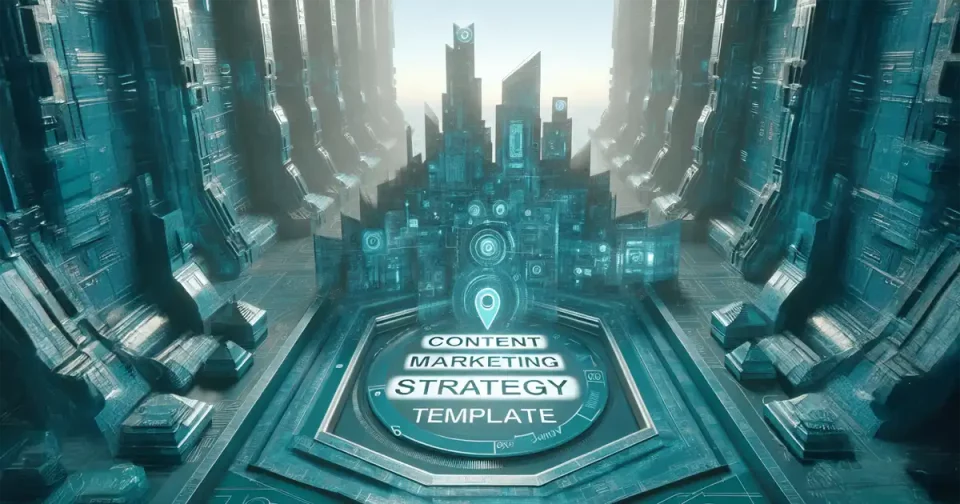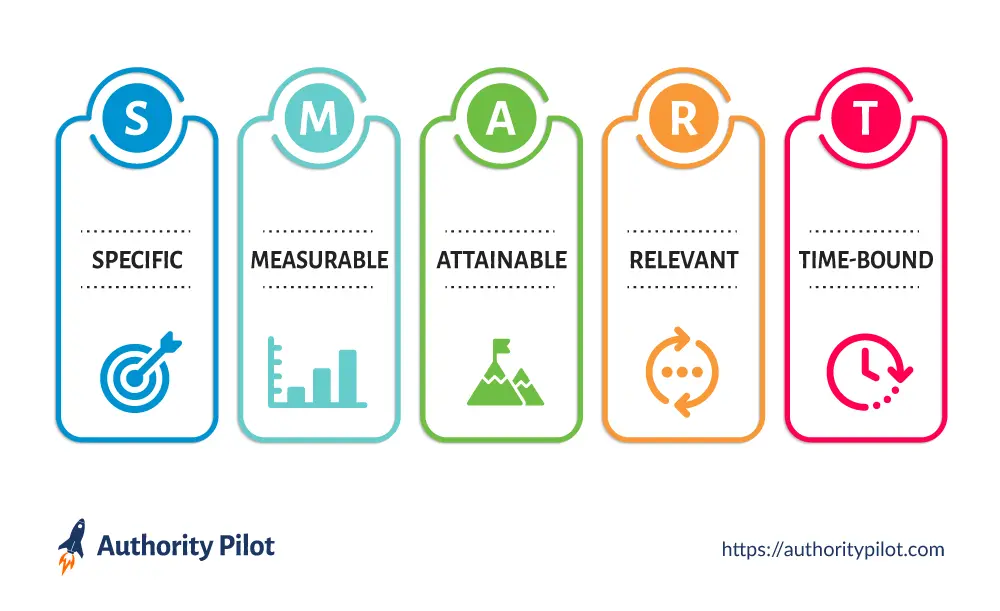
Many businesses struggle to create a content marketing strategy that drives real results. Without a clear plan, it’s easy to waste time and resources on content that fails to connect with your audience or achieve your goals, leading to frustration and missed opportunities. Instead of seeing growth, you’re left wondering why your content isn’t generating the leads or engagement you envisioned.
That’s where our ultimate content marketing strategy template comes in. This guide provides a simple, actionable framework to help you craft a strategy that aligns with your goals, resonates with your audience, and drives meaningful results.
Building a Content Marketing Strategy
Creating an effective content marketing strategy template starts with understanding your audience, analyzing market data, and building detailed customer personas. These essential steps lay the groundwork for crafting content that connects with your target market and fuels business growth.
Understanding Your Audience
To develop a successful content strategy, it’s important to start by understanding your audience. By learning about their preferences, challenges, and behaviors, you can create content that aligns with their needs and expectations. This process includes identifying key demographics like age, gender, location, and interests.
Key Demographics Table:
| Demographic | Description |
|---|---|
| Age | 25-45 |
| Gender | Male/Female |
| Location | Urban/Suburban |
| Interests | Technology, Business Growth, Marketing Trends |
Engaging with your audience through surveys, social media interactions, and customer feedback helps gather valuable insights. This information enables you to refine your content strategy to better address their needs. Discover more about building a content marketing strategy and crafting content that resonates with your audience.
Researching Market Data
Market research plays a key role in uncovering trends and gaps that can enhance your content strategy. Analyzing market data helps you understand the competitive landscape, customer preferences, and industry patterns, revealing opportunities to create unique and impactful content.
Steps for Researching Market Data:
- Analyze competitor content and strategies
- Use tools like Google Trends and SEMrush to identify popular topics
- Conduct keyword research to discover search intent and volume
- Monitor social media conversations for emerging trends
Staying informed about market trends ensures that your content remains both relevant and engaging. For more in-depth strategies, check out our guide on SEO content marketing strategy.
Creating Customer Personas
Customer personas are fictional profiles of ideal customers, created using real data and market research. Developing detailed personas allows you to tailor your content strategy to the specific needs of your target audience (Seismic). This approach helps you create personalized content that attracts and keeps customers engaged.
Sample Customer Persona Table:
| Attribute | Details |
|---|---|
| Name | Marketing Manager Matt |
| Age | 35 |
| Job Title | Marketing Manager |
| Goals | Generate more leads, Increase brand awareness |
| Challenges | Limited budget, Keeping up with marketing trends |
| Preferred Content | Blog posts, Infographics, Case studies |
Creating detailed customer personas allows us to develop content that directly addresses specific challenges and aligns with our audience’s goals. This personalized approach boosts engagement and improves conversion rates. Explore our content marketing strategy examples for insights on building effective customer personas.
By combining audience insights, market research, and customer personas, we establish a strong foundation for achieving our marketing objectives. Focusing on the needs and behaviors of our target audience enables us to produce compelling, relevant content that drives brand growth and generates leads.
Developing Content Strategies
A well-organized content marketing strategy is key to fostering brand growth and attracting leads. This section explores choosing the right content types, integrating an effective SEO strategy, and maximizing the potential of social media.
Selecting Content Types
Choosing the right content types involves relying on proven strategies. Recognizing and utilizing a variety of content formats can deliver the best outcomes:
Blog Posts:
- Excellent for building thought leadership.
- Boost SEO by targeting relevant keywords.
- Regular updates keep audiences engaged and informed.
Content Offers:
- Often referred to as gated content or content upgrades.
- Exchanged for valuable contact information like emails.
- A powerful tool for generating leads (Roketto).
Videos:
- A highly engaging format that captures attention.
- Simplifies complex topics through visual explanations.
- Helps increase time spent on your site.
Infographics:
- Attractive and easy-to-digest visual data presentations.
- Highly shareable across social media platforms.
- Breaks down complex information for better understanding.
Social Media Posts:
- Effective for connecting and interacting with followers.
- Includes organic content and paid advertisements (Roketto).
- Enhances brand visibility and supports lead generation.
Incorporating SEO Strategy
Incorporating a solid SEO strategy is a core element of any successful content marketing plan. This includes:
Keyword Research:
- Discover relevant keywords that resonate with your audience.
- Integrate keywords naturally into your content.
- Enhance search engine visibility and rankings.
On-Page SEO:
- Use structured headings (H1, H2, etc.) effectively.
- Add meta descriptions and alt tags to improve content accessibility.
- Streamline site navigation and layout for better usability.
Backlinks:
- Build links from trusted and authoritative websites.
- Strengthen domain authority and credibility.
- Drive referral traffic to your site.
User Experience (UX):
- Optimize your website’s design and layout.
- Strategically position content offers and calls-to-action (CTAs).
- Enhance opportunities to capture and convert leads.
| Metric | Importance |
|---|---|
| Keyword Rankings | Evaluate the effectiveness of your SEO efforts. |
| Organic Traffic | Reflects the success of your SEO strategy in attracting visitors. |
| Bounce Rate | Indicates the level of user engagement with your content. |
| Conversion Rate | Assesses the efficiency of your content in generating leads. |
To explore SEO strategies in greater detail, check out our article on SEO content marketing strategy.
Leveraging Social Media
Effectively utilizing social media can significantly enhance your brand’s visibility and drive lead generation. By strategically engaging with your audience on the platforms they use most, you can build stronger connections, foster trust, and expand your reach. Social media provides an excellent opportunity to showcase your expertise, share valuable content, and create meaningful interactions, ultimately driving traffic and conversions (Roketto):
Organic Social Media Marketing:
- Share engaging and consistent content to maintain audience interest.
- Foster a loyal community of followers through meaningful interactions.
- Inspire user-generated content to amplify your brand’s reach.
Paid Social Media Marketing:
- Utilize sponsored ads and boosted posts to increase visibility.
- Focus on specific demographics to reach your ideal audience.
- Monitor and adjust ad performance to optimize results.
Content Distribution:
- Share blog posts, videos, and other content across social platforms.
- Incorporate relevant hashtags to improve discoverability.
- Engage in industry-focused groups to expand your network and authority.
Explore our social media content marketing strategy for inspiration and detailed techniques.
Implementing Content Marketing Tactics
This section highlights essential tactics to help you successfully implement your content marketing strategy. By utilizing a variety of content types and strategic promotional methods, you can expand your reach, engage your audience more effectively, and achieve your marketing goals. Whether it’s crafting compelling blog posts, leveraging the power of videos, or tapping into the potential of social media, these approaches will enable you to connect with your target audience, drive traffic, and build stronger brand recognition.
Utilizing Blogs & Case Studies
Blogs and case studies form the backbone of our content marketing strategy template, each playing a unique yet complementary role in our overall approach.
Blogs: Crafting blog posts allows us to target different stages of the buyer’s journey (DesignLoud). Consistently updating blogs enhances SEO performance, boosts organic traffic, and positions your brand as a thought leader.
| Content Type | Purpose | KPI |
|---|---|---|
| Educational Blog Post | Awareness | Website Traffic |
| How-to Guide | Consideration | Time on Page |
| Product Review | Decision | Conversion Rates |
Case Studies: These offer detailed insights into how your products or services address specific challenges. They showcase successful outcomes and help establish trust with prospective clients.
| Case Study | Purpose | KPI |
|---|---|---|
| Success Story | Decision & Purchase | Lead Generation |
| Customer Testimonial | Retention & Advocacy | Social Shares |
Crafting Compelling Infographics
Visual content such as infographics is an excellent tool for presenting complex information in a clear and concise manner. Their engaging and shareable nature makes them effective at grabbing and holding your audience’s attention.
Infographics are ideal for summarizing data, comparing information, and simplifying intricate processes. When well-designed, they not only improve user experience but also serve as versatile assets across various digital channels.
Benefits of Infographics:
- Boosts Engagement: Captures and retains audience interest.
- Improves Information Retention: Makes key messages easier to understand and remember.
- Enhances Social Media Shareability: Encourages users to share across platforms.
To evaluate their impact, track metrics like social shares, website traffic, and audience interactions. These insights will help refine your approach and improve future designs (DivvyHQ).
Promoting Content Effectively
Promoting content strategically is key to reaching the right audience and creating the desired impact.
- SEO: Implementing SEO techniques boosts search engine rankings, making your content more discoverable. This includes optimizing keywords, crafting compelling meta descriptions, and ensuring mobile-friendliness for better accessibility.
- Social Media: Utilizing social media marketing strategies can greatly expand your reach. Focus on the platforms where your target audience is most active, and tailor your content to resonate with their interests and preferences.
- Email Marketing: Targeted email campaigns are a powerful way to nurture leads and encourage conversions. By segmenting your email lists and delivering personalized content, you can enhance engagement and build stronger connections with your subscribers.
Promotion Channels:
- Organic Search
- Social Media Platforms
- Email Campaigns
To evaluate the success of your promotion strategies, it’s essential to monitor Key Performance Indicators (KPIs) such as click-through rates, social media interactions, and conversion rates.
Incorporating these tactics strengthens your overall content marketing strategy, enhancing your ability to grow your brand and generate leads. For additional insights and practical frameworks, explore our content marketing strategy examples.
Measuring Content Performance
Evaluating the success of our content marketing strategy template requires a thorough approach to performance measurement. This includes establishing SMART goals, monitoring key metrics, and leveraging analytics to inform and refine our decisions.

Setting SMART Goals
SMART goals—Specific, Measurable, Attainable, Relevant, and Time-bound—offer a structured framework to align content marketing efforts with overarching business objectives. Every piece of content should play a role in supporting larger goals, such as driving lead generation or boosting conversions.
| Goal Attribute | Description |
|---|---|
| Specific | Clearly defined and unambiguous |
| Measurable | Quantifiable to track progress |
| Attainable | Realistic and achievable |
| Relevant | Aligned with business objectives |
| Time-bound | Set within a specific timeframe |
To achieve success, your goals should prioritize generating leads, fostering relationships, and driving conversions. Examples include:
- Increase Website Traffic: Aim to grow monthly unique visitors by 25% within six months.
- Boost Lead Generation: Target acquiring 100 new leads per month through strategic content.
- Enhance Conversion Rates: Work to raise the conversion rate of content downloads by 10% in the next quarter.
Tracking Key Metrics
Tracking the performance of your content marketing efforts is crucial for optimizing results and aligning with business objectives. Key Performance Indicators (KPIs) offer real-time insights to help shape and refine your strategy.
| KPI | Description |
|---|---|
| Website Traffic | Tracks the number of visitors coming to your website. |
| Social Media Engagement | Measures interactions such as likes, shares, and comments on social platforms. |
| Lead Generation | Counts the number of leads generated through your content. |
| Conversion Rate | Represents the percentage of visitors who take the desired action, such as becoming customers. |
| Bounce Rate | Indicates the percentage of visitors who leave your site without engaging further. |
| Metric | Measurement |
|---|---|
| Monthly Unique Visitors | 10,000 |
| Social Media Shares | 500 per post |
| Leads Generated | 150 per month |
| Content Download Conversion Rate | 5% |
| Bounce Rate | Below 40% |
These metrics provide valuable insights into the performance of your content and highlight areas for improvement. For instance, a high bounce rate could signal that the content isn’t engaging or relevant to your audience, indicating the need for adjustments to your content strategy.
Analytics for Data-Driven Decisions
Analytics are essential for making data-driven decisions about your content marketing strategy. By examining data, you can uncover trends, allocate resources effectively, and adjust your approach strategically.
Tools such as Google Analytics, HubSpot, and social media insights help you track:
- Audience Behavior: Understand how visitors engage with your content.
- Content Performance: Determine which pieces resonate most with your audience.
- ROI: Assess the return on investment from various content marketing efforts.

| Analytical Tool | Key Insights |
|---|---|
| Google Analytics | Website traffic, audience behavior |
| HubSpot | Lead generation, conversion rates |
| Social Media Insights | Engagement metrics |
These insights are essential for fine-tuning your strategy and ensuring your content supports your business objectives. Regularly reviewing analytics allows you to remain adaptable and responsive to your audience’s needs and market trends.
By establishing SMART goals, monitoring key metrics, and utilizing analytics, your content marketing strategy can consistently deliver impactful results and achieve your desired business outcomes. For further guidance, explore our content marketing strategy examples and framework.
Ensuring Success through Adaptation
To maintain the effectiveness and relevance of your content marketing strategy template over time, it’s important to continuously adapt and improve your approach. This includes analyzing metrics, collaborating with your team, and upholding high-quality standards.
Reviewing and Adapting Metrics
Regularly assessing and adjusting metrics is key to success. Analyzing content performance data helps pinpoint which pieces drive results and which fall short. This process enables us to replicate effective content while steering clear of less impactful approaches (CoSchedule). Establishing SMART goals—Specific, Measurable, Attainable, Relevant, and Time-bound—and monitoring key metrics keeps your strategy focused and data-driven.
| Metric | Description | Importance |
|---|---|---|
| Website Traffic | Number of visitors to the website | Indicates content reach |
| Engagement Rate | Likes, shares, comments, and interactions | Measures audience engagement |
| Conversion Rate | Percentage of visitors who take a desired action | Assesses content effectiveness |
| Bounce Rate | Percentage of visitors who leave quickly | Highlights content quality |
Involving Teammates in Strategy
Engaging the entire team enhances the quality and creativity of content marketing efforts. Collaboration brings together diverse perspectives and ideas, resulting in a more well-rounded and effective strategy. Utilizing templates helps standardize content creation, streamline team interactions, and simplify the process.
Team involvement can be encouraged through structured brainstorming sessions, regular feedback loops, and cross-functional collaboration. These practices align everyone toward shared objectives and foster a unified, cohesive approach to achieving your goals.
Maintaining High-Quality Standards
Maintaining high standards is essential for a successful content marketing strategy. Quality content fosters trust, establishes authority, and keeps your audience engaged. To ensure your content consistently meets these standards:
- Consistent Editing and Proofreading: Regularly review content to eliminate errors and ensure consistency in tone and style.
- Engaging and Informative Content: Prioritize creating content that delivers value and captivates your audience, using compelling storytelling and data-driven insights.
- Ongoing Training: Support your team with continuous learning opportunities to stay current with trends and best practices in content marketing.
- Audience Feedback: Actively gather and apply audience feedback to refine and enhance your content.
A commitment to adaptation and continuous improvement ensures your content marketing strategy stays effective, relevant, and impactful. By focusing on these key areas, you can drive brand growth and generate leads successfully. For more ideas and inspiration, check out our articles on B2B content marketing strategy and content marketing strategy examples.
Content Marketing Strategy Checklist
Refer to this checklist to ensure your content marketing strategy is thorough and effective. Each step is designed to build on the previous one, creating a strong foundation for success.
Planning
- Define Your Goals: Establish clear objectives, such as increasing website traffic, generating leads, or improving conversions.
- Understand Your Audience: Research demographics, preferences, and pain points through surveys, customer feedback, and analytics.
- Conduct Market Research: Analyze competitors, identify trends, and explore gaps in content opportunities.
Development
- Create Customer Personas: Develop detailed profiles of your target audience to personalize content.
- Outline Key Content Types: Decide on the mix of blogs, videos, infographics, case studies, and social media posts.
- Perform Keyword Research: Identify high-impact keywords to guide content creation and improve search visibility.
Execution
- Develop a Content Calendar: Plan and schedule content publication for consistency and variety.
- Optimize for SEO: Use on-page SEO techniques, including meta descriptions, alt tags, and structured headings.
- Leverage Social Media: Distribute content across the platforms most relevant to your audience.
Promotion
- Run Email Campaigns: Use segmented lists and personalized messaging to nurture leads.
- Engage with Your Audience: Respond to comments, messages, and feedback on social platforms.
- Build Backlinks: Establish partnerships and secure links from credible websites.
Measurement and Adaptation
- Track Performance Metrics: Monitor KPIs like website traffic, engagement rates, and conversions.
- Analyze Results: Use tools like Google Analytics to identify successful content and areas for improvement.
- Refine Your Strategy: Regularly adjust your approach based on performance data and audience feedback.
The Roadmap to Success
Building an effective content marketing strategy doesn’t have to be overwhelming. By following a structured approach, you can create a strategy that resonates with your audience, drives meaningful engagement, and delivers measurable results.
Start by understanding your audience, conducting thorough market research, and crafting detailed customer personas. Use this foundation to develop a mix of content types, optimize for SEO, and leverage social media and email marketing to expand your reach. Regularly track performance metrics to identify what’s working and where adjustments are needed.
Remember, success lies in continuous improvement. Stay adaptable, seek feedback, and keep refining your approach to align with your goals and your audience’s needs. With this framework, you’re well-equipped to turn your content marketing efforts into a powerful driver of growth and success.







